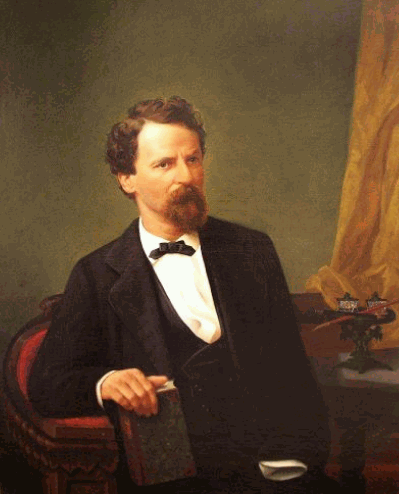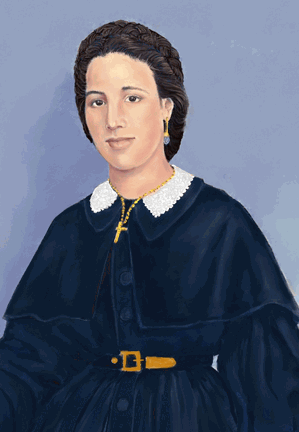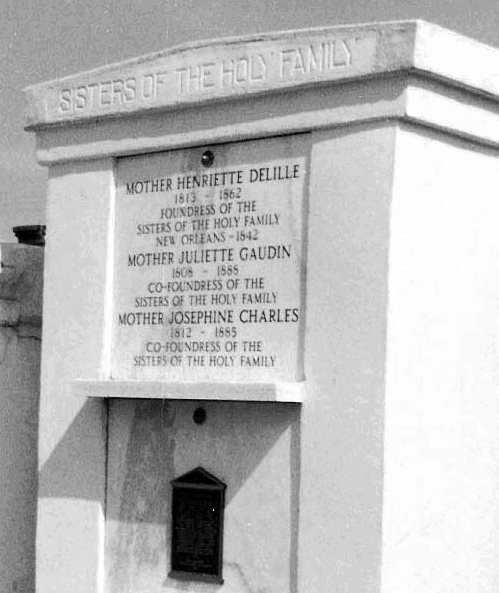|
Today in New Orleans History |
|
|
October 15

 To receive an update for each day in New Orleans history,
join our facebook page - Today in New
Orleans History.
From 1913 to about 1950, a
vocational school at 3649 Laurel Street in New Orleans was named for Nicholls. It opened as the Francis T. Nicholls Industrial
School for Girls, and offered secondary vocational training, concentrating on apparel manufacturing. The school was later
renamed Nicholls Vocational School for Girls, and then Nicholls Evening Vocational School. In
1940, the public Francis T. Nicholls High School, was opened at 3820 St. Claude Avenue in New Orleans. In the late 1990s the
high school was renamed for former slave and abolitionist leader Frederick Douglass. During the 1960s,
the school was integrated and the mascot Rebel was changed to the current mascot Bobcat. Governor
Nicholls Street in New Orleans as well as the Governor Nicholls Street Wharf is named for him.  To receive an update for each day in New Orleans
history, join our facebook page
- Today in New Orleans History
Construction of Tulane Gym began in 1931 with funds earned from the football team's appearance in
the 1932 Rose Bowl, and as a result it was known for many years around campus as "Rose Bowl Gym." It Opened
on October 15, 1933. During World War II, the building housed V-12 students, and in 1975 it was the site
of President Gerald Ford's speech announcing the end of US involvement in the Vietnam War. The Fieldhouse is the on-campus
home of the Tulane Green Wave men's and women's basketball teams and the women's volleyball team, and it is the 9th-oldest
active basketball venue in the nation. Tulane Gym was the home of the New Orleans Buccaneers for their 1969-70 season. In
1988 the university remodelled and refurbished the then 55-year-old structure, timed to coincide with the return of the
men's basketball program from its three-season dormancy in the wake of a point shaving scandal involving future NBA player
John "Hot Rod" Williams. Upon completion in 1989, Tulane Gym was renamed "Avron B. Fogelman Arena" in
honor of the Memphis businessman and Tulane alumnus whose donations funded the project.Fogelman Arena has played host to the
Conference USA Women's Basketball Tournament twice, in 1999 and 2009. Immediately after the 2011–12 basketball
season, a major, two-phase renovation of the arena was made possible with funds provided by longtime supporters Bob
and Kate Devlin. Phase One, including new lighting, ticket booths, chair-back seats, concrete supports, contoured bench
seating, concessions, team shop, and club areas, was completed in time for the 2012–13 basketball season. Additionally
the acoustical ceiling was removed to reveal the original red wood ceiling and steel structure. The newly renovated multi-purpose
3,600-seat Devlin Fieldhouse opened on November 9, 2012, with a women's basketball game versus the Louisiana Tech Lady Techsters. The Queen and Crescent Limited passenger train, operated by the Southern Railway,
traversed an historic route that had been established in the late 1800s called the Queen and Crescent Route, which referred
to Cincinnati as the "Queen City" and New Orleans as the "Crescent City". The train began service in 1926
but was never a financial success. The Southern Railway operated the Queen and Crescent Limited from Cincinnati to New Orleans
via Lexington, Kentucky, Chattanooga, Tennessee, Birmingham, Alabama and Meridian, Mississippi. It carried both coaches and
Pullman sleepers and a dining car. Its road numbers on the Southern Railway were #43 (southbound)
and #44 (northbound). In the first year of operation, the train derailed on October 15, 1926, one half
mile south of Williamstown, Kentucky. One engineer died and another was seriously injured. On February 4, 1947, the Queen
and Crescent struck a car and killed three persons near New Orleans. The Queen and Crescent was removed from
the timetable by 1949 and only a remnant remained: Southern operated Train numbers 43 and 44 between Birmingham, Alabama
and Meridian, Mississippi as a local.
A New Orleans lady, born in 1813
to a wealthy Frenchman and a quadroon free woman of color, who rejected the social norms of her times is now the first U.S.
native-born African American religious leader whose cause for canonization was officially opened by the Catholic Church.
Six years later, at the urging of Jeanne Marie
Aliquot (an early supporter of St. Augustine Church) and the counseling of Pere Etienne Rousselon (vica-general of the
diocese), Delille and Gaudin knelt publicly at the altar of St. Augustine Church on November 21, 1842 and pledged to
live in community to work for orphan girls, the uneducated, the poor, the sick and the elderly among the free people
of color, thus founding the Congregation of the Sisters of the Holy Family -- the second-oldest African-American congregation
of religious women. In 1843, catechism classes were conducted for adults and children on St. Augustine's
property at Bayou Road (now Governor Nicholls). Delille and Gaudin were later joined by Josephine Charles; the first
three novices, Delille, Gaudin and Charles, are considered the founders of the congregation. Although the primary work
of the sisters was in the area of education, during her tenure as head of the order, Delille made it possible for the
order to build a home for the sick, aged, and poor Black residents of the city. The photo above was taken by Sister Doris Goudeaux in 2008
of the three founding members' tomb in St. Louis Cemetery No. 2. In summing up Henreitte Delille's life and mission,
Sylvia Thibodeaux, a modern Sister of the Holy Family, told the Los Angeles Times, "She was the servant of slaves.
You can't get more committed than that. Francisco Bartolomé Porró y Reinado, O.F.M. (October 15, 1739 – January 3, 1814) was a Spanish prelate of the Roman Catholic Church. He served as Bishop of Louisiana and the Two Floridas (1801–1803) and Bishop of Tarazona (1803–1814). Nicolas-Ignace de Beaubois (October 15, 1689 – January 13, 1770) was a French
Jesuit priest and missionary who joined the Canadian mission in Quebec in 1719. Beaubois spent a training period in Quebec
and began his spreading of religious doctrine among the Illinois Indians in 1721. On 2 Feb.
1723, at Kaskaskia, Illinois he took the vows of a Jesuit. Because of the expansion of the Mississippi valley missions, the
Jesuits had made the area a distinct mission district within the diocese of Quebec and Beaubois became the superior. He immediately
went to France to populate and strengthen the new jurisdiction. The Compagnie des Indes
was responsible for funding the parishes and missions in the Missio Ludovisiana district and he was successful in
negotiating appropriate funding for future operations. He obtained authorization for the Jesuits to open a house in New
Orleans and to have a plantation near the city for supplementing their operation. Beaubois also arranged to have Ursuline
nuns funded to establish a girls’ school in New Orleans. This became the first girls' school in the Mississippi valley. |
|
|

To receive an update for each day in New Orleans history,
join our facebook page - Today in New
Orleans History.
Analytics |

 Henriette Delille's birth was the results of a placage, an extralegal "common law" system which became institutionalized
in our city during the Colonial Era. The arrangements included contracts or negotiations between white men and free
women of color which stipulated the financial and/or housing arrangements for woman, the settlement of property, and, many
times, paternal recognition of any children the union produced. The woman's mother usually negotiated the terms of the agreements,
including the financial payment to the parent. To our modern sensibilities, such arrangements seem arcahaic but
they were acceptable in their day and provided mixed-race women with social prestige and financial security.
Henriette Delille's birth was the results of a placage, an extralegal "common law" system which became institutionalized
in our city during the Colonial Era. The arrangements included contracts or negotiations between white men and free
women of color which stipulated the financial and/or housing arrangements for woman, the settlement of property, and, many
times, paternal recognition of any children the union produced. The woman's mother usually negotiated the terms of the agreements,
including the financial payment to the parent. To our modern sensibilities, such arrangements seem arcahaic but
they were acceptable in their day and provided mixed-race women with social prestige and financial security.  Henriette Delille passed away on November 16, 1862 at the age of 50. It is thought that her death was a result of tuberculosis.
Her funeral was held at St. Augustine church. She is buried in St. Louis Cemetery No. 2.
Henriette Delille passed away on November 16, 1862 at the age of 50. It is thought that her death was a result of tuberculosis.
Her funeral was held at St. Augustine church. She is buried in St. Louis Cemetery No. 2. 
